Development of private defense industry
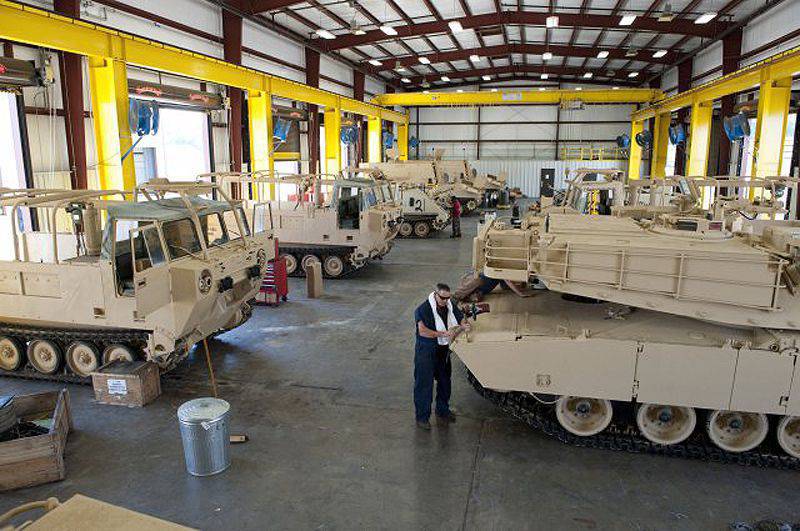
The Anniston Army Depot War Plant performs maintenance and repair at the workshop level tanks M1 Abrams and M578 ammunition transport vehicles (pictured)
The industry, perhaps, assumes more and more tasks for the maintenance and support of military ground equipment, and in this connection a number of advantages appear. Estimate the difference between private and public enterprises and services.
The production and maintenance of military products is becoming increasingly difficult and expensive, the question of how to effectively maintain these weapons and equipment becomes as important as the production itself, where all attention is paid to industrial cooperation.
However, there may be an internal contradiction between the priorities and goals of the military and the priorities and goals of private industry. The first focus primarily on how to have the necessary weapons for the fight, while the latter, although ready to meet these needs, are looking primarily for profit from their activities.
Private weapons
Enterprises for the production of ammunition and weapons, owned and operated by the state, have been around for a very long time. For example, the British factory Royal Small Arms Factory Enfield was opened in 1816, the American Springfield Armory was founded in 1777, and the Chilean Fabricasy Maestranzas del Ejercito (FAMAE) was established in 1811, to produce small weapons and guns.
Each of these enterprises was created for the purpose of producing weapons. Often their appearance was associated with poor quality, high cost or short supply of weapons produced by private companies. Certainly, the process of their creation was promoted by the point of view of some governments, which, like shipbuilding, the production of weapons in the country is vital for the defense of the state.
In such countries as Italy and Germany, private arms firms have long been widely represented and did not see the need for state arsenals there. Examples include Beretta and Mauser respectively. These countries relied on industry and organized close collaborative ties with local firms, stimulating and often actively supporting them not only in their own country, but also in foreign markets.
The existing US Army workshop system, which is part of the US Army Logistics Command, consists of 11 workshops and arsenals (not including 17 ammunition factories).
Although this system is currently less than it was in its best years during the Second World War, it is still very significant. Anniston Army Depot occupies an area of 65 km2, more than 5000 people work here, this is the only workshop capable of repairing heavy tracked vehicles and their components, it also houses the modern production of repair of small arms of 23225 square meters.
The army maintains a “coherent industrial basis” of this enterprise, which is unique, provides services and goods that are different from private industry, and needs protectionist measures. Congress not only supported, but also allocated funds for the development of the enterprise, motivated, at least in part, by the policy of preserving jobs and the local budget.
The Brazilian army chose Iveco Latin America, manufacturer of VBTP Guarani 6x6, also for maintenance and logistical support.
Neither fish nor fowl
Although a number of initiatives have allowed for greater flexibility in the interaction between state and private defense companies, nevertheless, certain friction remains between them. This is especially evident in the current conditions of cuts in defense budgets.
In one of the interviews, a representative of the defense industry described the American system of workshops and logistics as “neither fish nor fowl”, when the state and private industries perform the same tasks.
The representative suggested that the tools, machines and production facilities are often duplicated on industrial sites. If you look at the enterprise Anniston Army Depot, it is difficult to notice any differences from the capacities at the factory of BAE Systems in York.
There is an opinion, especially in large private companies, that by combining and sharing contract work with army workshops and using their facilities, a competitive advantage is created. Critics suggest that this is a recognition of the inherent desire of the American army to support this part of its "team."
The difficulty lies in the fact that when there is not enough work for both sides, this results in a kind of game in thimbles, as a result of which some private factories remain without work or not fully loaded. The involuntary consequence of this is the further reduction of the capabilities of the private defense industry, as firms close their capacities and unite.
According to Dr. Daniel Gur of the Lexington Institute, the rationale for protecting state defense enterprises not only makes no more sense, but actually reduces the core potential of the national defense industry.
“The current industrial base is an artifact of the past era,” he said in an interview with a newspaper. “With shrinking defense budgets, laws that reserve 50% of funds allocated to maintain workshops or those that protect them from competing for orders are counterproductive.”
Consolidation difficulties
The consolidation of the private defense industry and the limited number of procurement programs make this difficult, especially given the fact that the largest part of the work in any project and the cost comes from the provision and maintenance of the systems rather than the purchase of the hardware itself.
Gur explained that enforcing public workshops reduces the ability to adopt and apply many commercial methods of doing business, for example, comprehensive product support throughout the life cycle.
He said that the current structure does not encourage companies to “long-term vision” of the program and does not allow them to more effectively spend money and more efficiently use resources.
Understanding that after-sales service has the highest revenue potential, for example, has allowed companies to offer a more competitive preliminary price with the knowledge that they can compensate for revenues in servicing and securing the product throughout its service life along with upgrades and related parts. This is simply an unviable approach to US defense policy procurement, as the material and technical support is mostly superficial. “The current procurement system and workshops of the US Department of Defense are increasingly moving away from the realities of the changing industrial and technological world,” Gur said.
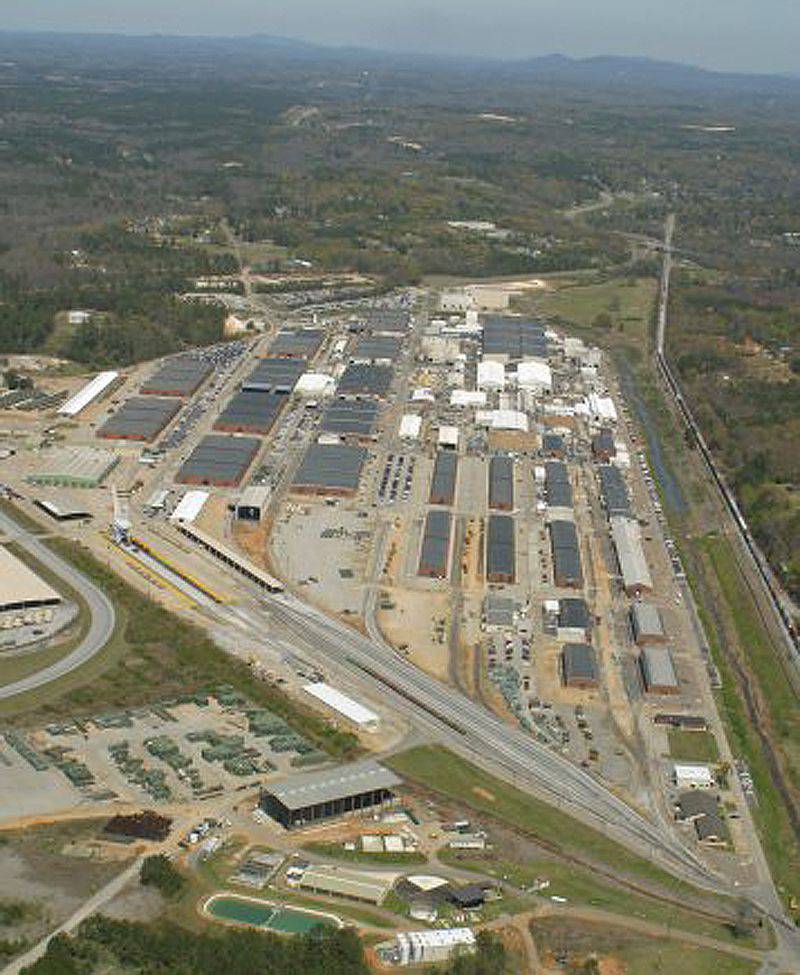
In the US, state-owned military factories, such as Anniston, had modest production facilities until, with the onset of World War II, the enormous demand for military products did not trigger their rapid development.
Incompatibility issues
Many of the revolutionary processes adopted in the past decades and the general commercial practice are difficult to apply in a segmented defense support system.
Business methods, such as orders and deliveries “right on schedule”, consolidated service management and centralization of the process are by and large incompatible with the existing system. This is compounded by a reduction in the number of major defense programs and a smaller number of companies participating in them.
As Gur noted, the reality today is that the US defense market (and to a certain extent the world market) is no longer a free market. A limited number of companies own major defense development and procurement programs. He doubted whether the US defense industry could solve its problems, being de facto mainly an arsenal system.
For countries with less developed private industry, following the British privatization path is difficult, especially in the production of heavy weapons. As a result, state-owned companies or army-led service and logistics facilities can often be found in countries such as Brazil and Chile.
The Chilean company FAMAE, although originally based on the production of ammunition and small arms, currently provides high-level repairs, upgrades and maintenance of combat equipment and combat equipment for ground forces.
Import systems
Many of them are imported systems, such as the German Leopard MBT, the Marder BMP and the Gepard anti-aircraft gun. All these systems have a high level of complexity from a technological point of view.
For these machines, FAMAE has contracted directly with manufacturers of original systems for technical support and cooperation within the country. A representative of Krauss-Maffei Wegmann (KMW) noted on this occasion that such a scheme works well for both parties, since it relies on the existing infrastructure and facilities of FAMAE, which provide for the needs of the army throughout the country.
This can significantly reduce the expenditure of funds for the creation of new products and at the same time use local human resources with extensive experience and qualifications.
The Brazilian army has traditionally sought to maintain its own ground combat equipment. This was partly due to insufficient qualifications and limited production base. As a result, the army created its own repair and maintenance facilities.
A notable exception was the significant commercial success of Engasa in the 70s and 80s when it launched the Cascavel, Urutu and Astros platforms. At that time, the company proved itself not only as a developer and manufacturer of modern combat vehicles, but also as a technical support center. However, the loss of state support and key Middle Eastern contracts due to the first Iraq war put the company on the verge of bankruptcy and delayed the promising development of the local defense industry of ground systems that could meet national needs.
As for artillery and combat vehicles, the activities of the army workshops consisted mainly in supporting the equipment in working condition.
A source in the Brazilian army participating in ground-based systems programs explained that in the past, costs were often a decisive factor when choosing a logistics method. As a result, the army’s report for the year 2008 refers to the problem of the overall combat readiness of large quantities of equipment.
Transition to private
In the UK, the involvement of state and army enterprises in the development, production and support of armaments has a long-standing history. Organizations such as Royal Ordnance Factories (ROF) and the Defense Support Group (DSG) were previously part of the Ministry of Defense structure. However, with the advent of a new philosophy at the end of 70, budgetary difficulties, and smaller armed forces, things began to change.
At the end of the 80-ies, the company ROF was withdrawn from the structure of the Ministry of Defense and privatized. Ultimately, in 1987, it was bought by British Aerospace (now BAE Systems), while DSG, which has started as a state enterprise since 1856, continued to maintain and repair basic military equipment and maintained the ground-based fleet readiness . However, in December 2014, the Ministry of Defense announced that DSG was bought by Babcock International for 207,2 million dollars. After that, Babcock received a ten-year contract with a potential of billions of dollars for the maintenance, repair and storage of current military vehicles and light weapons.
Philip Dunne, Minister of Defense Services and Technology, said: “This Babcock deal will lay a sustainable long-term basis for DSG and allow for reforms in the maintenance and repair of equipment that the army is counting on. Babcock will provide advanced technology and fleet management expertise to optimize machine availability ... at the best cost to the taxpayer. "
This will translate the logistics of the ground systems of the British army into the private sector and fully complete the era of direct government control.
Alteration
The return of state support to the military and the obligation to create a local defense industry within the framework of a long-term national economic plan changes the situation. The focus of the National Defense Strategy is on enhancing the combat capabilities of the Brazilian armed forces.
As a result, several army procurement programs were launched. In addition, the rapid development of the economy in recent years, private investment and the growing technical skills of the workforce have seriously transformed the country.
For example, Brazil has become a major manufacturer of commercial trucks. The army uses them in order to maximize the potential of the existing system to provide its equipment. The initiative to involve Iveco in the development and production of a new Brazilian armored vehicle has become part of a broad plan. VBTP Guarani is produced by Iveco Latin America, which built its own factory in Brazil.
The challenge is how to maintain and expand these private defense capabilities, in particular, by providing enough orders and generating sustainable revenues.
Commercial firms for the production of machines receive income from both the sale of the product and after-sales service. The use of state capacity in this role takes this source of profit. Concerns about the losses of private companies forced us to revise the previous approach to the logistics, implemented by government agencies, at least for some systems.
Although the army continues to implement its own projects to modernize outdated systems, such as repairing the M113 tracked armored personnel carriers at a plant in Curitiba, it also concludes maintenance and technical support contracts with manufacturers of some of the newly introduced systems. Even as part of the M113 BTR, kits and initial training provided by BAE Systems are used.
In addition, the Brazilian army decided that the new VBTP Guarani 6x6 machines would be serviced by the manufacturer itself. This will allow Iveco to use the practice of commercial support and streamline the purchase of spare parts in order to significantly improve the efficiency of logistics. It will also simplify the creation of a local service base.
Global positioning
Brazil’s acquisition of the more modern Leopard 1A5 MBT, which began in 2009, and the Gepard 35-mm anti-aircraft missile systems in 2012, created a wide and comprehensive procurement logistics network, as well as a network of KMW service stations available to the Brazilian army.
The company's field presence is very broad, as it has experience in providing support for the entire life cycle for the German Bundeswehr, from design to deployment of its vehicles. Thus, cooperation with the army, which uses the private defense sector and works together with it to support and support all levels, has helped the industry to provide these services to foreign customers as well.
KMW do Brasil Sistemas Militares, a training and logistics company in the city of Santa Maria, joined similar logistics organizations in Greece, Mexico, the Netherlands, Singapore and Turkey.
In Brazil, the military is also able to immediately take advantage of local training, tooling, process, and parts supply networks; They can use all the experience gained during the years of operation of the system.
An additional advantage is that the total investment of private industry creates a local production base that can attract contracts from other armies in the region. An example of this is the Guarani machine from Iveco Latin America, which can also be purchased by Argentina.
Private Industry Support
Relying on industry to provide most of the integrated services for the entire life of the product is most typical for countries in which the existing modern defense industry exceeds the state industrial base, for example, as in the case of Italy, Germany and Sweden.
The close cooperation between the military and private industry in Germany has a rich history that began even before the unification of the country, and the army received great advantages from this kind of cooperation.
The integration of industrial partners and the military covers all areas, ranging from development and pilot work to local support, overhaul and improvement of characteristics and capabilities.
There are targeted efforts to promote and support the exchange of experiences, innovations and opportunities of companies. This can include not only such large defense enterprises as Rheinmetall and KMW, but also smaller ones, but, nevertheless, dynamic companies, such as Flensburger Fahrzeugbaugesellschaft (FFG).
Thorsten Peter, the head of sales at FFG, said that “our cooperation with the German army began back in 1963, when it was looking for a reliable industrial partner in Northern Germany for repairing tracked vehicles. And in the end, she found us. ”
FFG used its experience not only in repairing the M113, but also in upgrading and implementing specialized projects for BMP Marder, MBT Leopard and other machines for Australia, Canada, Chile, Denmark, Germany, Lithuania, Norway and Poland.
The Japanese self-defense ground forces also use a similar model to attract manufacturers of original systems to create a logistic support system for the workshop level. Most of the land equipment of the country is either locally produced or manufactured under license.
The Japanese military attache in the United States said that the Japanese self-defense forces were actively cooperating with industry to meet their needs for ground weapons.
Due to the limited number of systems required by the armed forces, and legally limited capacity to increase quantities through exports, the ability to use the existing commercial infrastructure for design, production, maintenance and logistics is considered fundamental.
Duplication of this is undesirable and unjustified. On the contrary, it is possible to get advantages as a result of the development of integrated supply methods and fleet management technologies that are being actively implemented not only by the heavyweights of Japanese industry - Komatsu, Japan Steel Works, Mitsubishi Heavy Industries, but also by other smaller commercial firms.
New provisioning model
In many industrial enterprises, built-in computers, GPS and wireless networks are already modifying the technological processes of maintenance, repair and logistical support of machines and other equipment.
Centralized automated systems using state monitoring and proactive replacement of modules and components have already been tested by many commercial structures. They radically change commercial methods and increase efficiency while reducing cost.
There are clear advantages of using these methods in the maintenance and provision of military equipment, when the first priority is to ensure the readiness of the material part for combat. This is further facilitated by the increased use of commercial systems in military applications.
In fact, despite the differences between military and commercial, still obvious and lying on the surface, they actually disappear at the level of subsystems and components. Some armies seek to use these trends in order to obtain alternative paths that could satisfy their needs for maintenance and logistics.
Canada is one example of this. Her army is moving to increase the responsibility of the contractor for the readiness of technology. The army, taking an example from the successful initiative of the Air Force, includes the maintenance and supply of spare parts as a separate item in the general procurement contract.
The contract for the purchase of TAPV machines also includes maintenance and logistical support that Textron Canada will provide.
As part of the Australian Land 400 program for the replacement of existing light armored systems, contracts will also be signed for lifelong maintenance and maintenance.
Providing TAPV Machine
The recent contract for the purchase of tactical patrol armored vehicles Tactical Armored Patrol Vehicle (TAPV) stipulates that the contractor must provide logistic support for the fleet of these vehicles for five years with options for the next 20 years.
The criterion for this support is to guarantee a certain machine readiness. The contractor must maintain the established baseline parameters and will be rewarded for higher levels of readiness.
This approach boils down to the adoption of management methods and predictive maintenance of successfully proved to be for a fleet of commercial vehicles. It also reduces the army’s need for support infrastructure, most of which the contractor could have in the field. The ability to obtain maintenance and maintenance work throughout the life of the equipment is for contractors the main incentive to invest in efficiency, which will directly benefit the end users.
Textron Systems, which received a contract worth 475,4 million for 500 TAPV machines, also received another service, repair and spare parts contract for the first five years of operation.
Neil Rutter, General Manager of Textron Systems Canada, said in one of his interviews: “We maintain our commitment to work with our Department of Defense and our partners in Canada in the production and logistics of the TAPV fleet.”
Close cooperation
Textron Systems regards this as a joint effort with machine operators in the Canadian army. Her stated approach is to establish close cooperation and dialogue between the company and the military, as well as staff.
Manufacturers of original equipment will have all the capabilities of a fully integrated database, in which each system and its status is entered. This approach allows for the provision of necessary support and spare parts in advance rather than reacting to an already accomplished failure. Equally important, it allows you to identify, prepare, propose and implement technical solutions and improvements as the need arises. It is likely that these capabilities would actually allow the prediction and correction of faults before they happen.
Apparently, the rest of the army watching the work of this model. The Australian Army is launching its Land 400 program to replace the Australian Light Armored Vehicle Australian Light Armored Vehicle and M113AS4.
At the beginning of 2015, the Australian Department of Defense official statement on the details of this program stated that lifelong support for the entire fleet would also be provided in accordance with the additional contract concluded with the selected vehicle supplier. This program is expected to be purchased over 700 machines that will be deployed in 2020 year.
Neither Canada nor Australia has a solid defense industry, although both seek to stimulate the creation of local facilities for the material and technical supply of military equipment.
Consequently, their approach, which is to provide the contractor with both production and technical support, involves taking on long-term commitments and, as a result, receiving a permanent income, and this in turn allows the local industry to plan the necessary investments. This is something that can not provide only one contract for the purchase of equipment.
For the future
Just as military equipment and its production process are affected by developments in the private industry, it seems that the maintenance and technical support of military equipment could also undergo significant changes due to the development of commercial structures.
Comprehensive service and modernization throughout the entire life cycle of a product, based on commercial principles, is well suited to meet the objectives of the reduced strength of the armed forces, various combat missions and rapid response increasingly typical for modern military operations.
Meanwhile, reducing both the need for ground weapons and defense budgets should serve as an incentive for more efficient and cost-effective ways to conduct maintenance and logistics.
However, the question remains as to how very traditional structures will or even be able to adapt in order to adopt new methods, processes and relationships necessary to achieve the proposed benefits.
Obviously, private industry, even where government enterprises are preferred, assumes a wider range of responsibilities for the maintenance and support of ground equipment. How far this goes will depend more on political factors in each country than on the economy and the advantages that the soldier will receive.
Materials used:
www.shephardmedia.com
en.wikipedia.org
www.military-today.com
www.forte.jor.br
www.famae.cl
www.textrontapv.ca
www.defence.gov.au
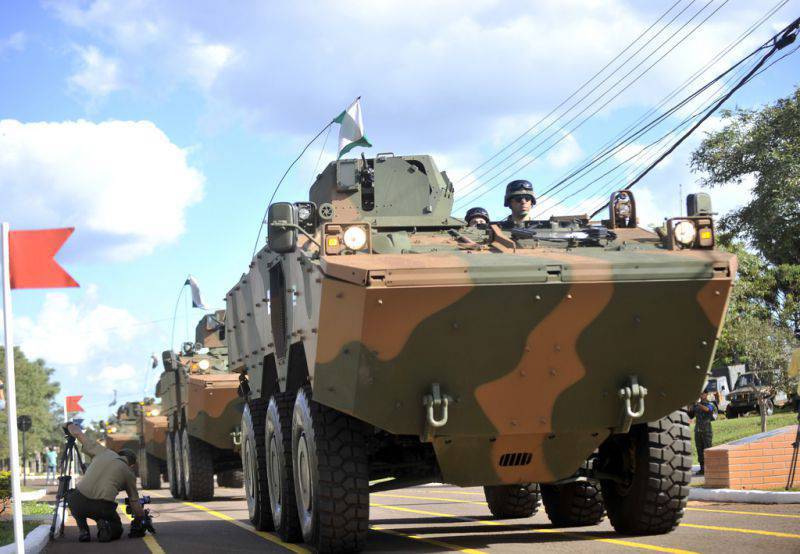
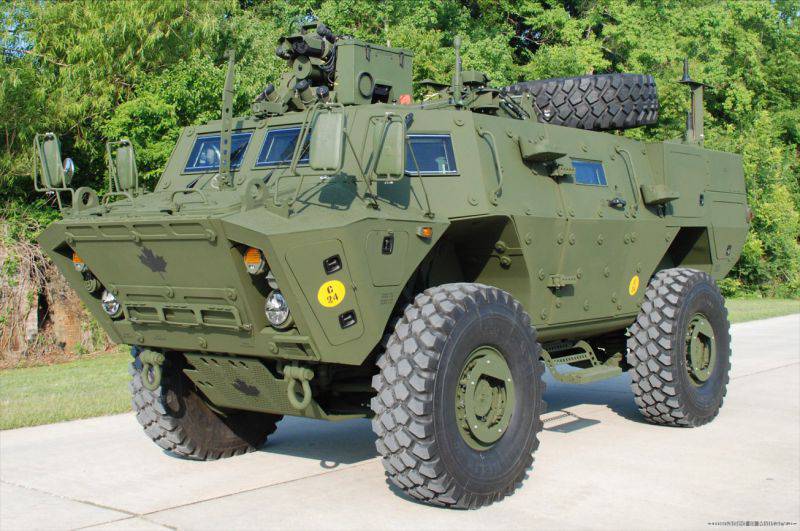
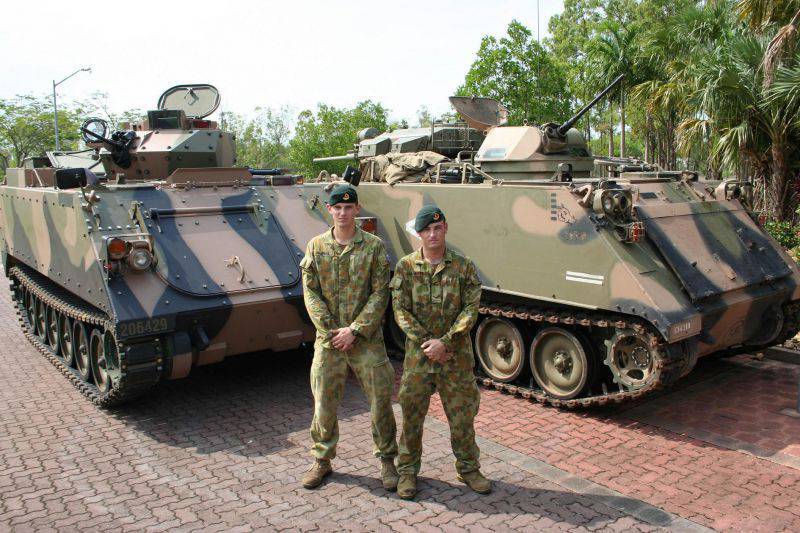
Information